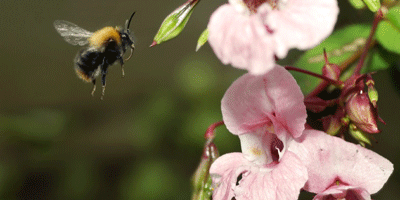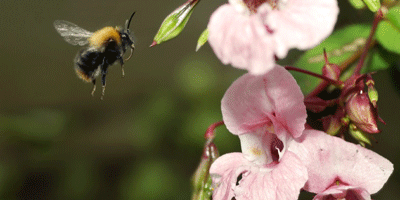Lévy Flight of the Bumblebee
Bumblebees visit flowers to collect nectar, often visiting multiple flowers in a single patch. Mathematically, a bee’s path has been described by a Lévy flight, which gives flights over long distances a larger weight than in an ordinary random walk model. This description is controversial, however, as bumblebees in the wild are under the constant risk of predators, such as spiders, which likely modifies their foraging behavior.
Writing in Physical Review Letters, Friedrich Lenz at Queen Mary, University of London, UK, and colleagues present a statistical analysis of the velocity distribution of bumblebees. They draw from experiments that track real bumblebees visiting replenishing nectar sources under threat from “artificial spiders,” which can be simulated with a trapping mechanism that holds the bumblebee for two seconds. The team finds that in the absence of spiders, the bumblebees forage more systematically and go directly from flower to flower. When predators are present, however, the bumblebees turn around more often, highlighting a more careful approach to avoid spiders. The analysis indicates that for real foraging, factors such as bumblebee sensory perception, memory, and daylight cycles must also be taken into account in addition to the presence of predators, all of which may cause cause deviation from a Lévy flight pattern. – Daniel Ucko





